The essence of poetry lies in its ability to capture the essence of life, transforming the ordinary into the extraordinary. For poets, the journey begins with sparks of inspiration that ignite creativity, guiding us toward profound expressions of emotion and thought. Whether channeling nature’s energy, expressing unspoken emotions, or reimagining everyday objects, the pursuit of creative thoughts for poets is a testament to the boundless imagination that drives artistic expression. By delving into one’s past, embracing the passage of time, and exploring abstract concepts, poets can unlock new dimensions of their craft. The interplay of shadows and light, the rhythm of seasonal shifts, and the contrasts of opposites further enrich this transformative process. Even within constraints, creativity thrives, offering fresh perspectives and pushing boundaries. In this exploration, we uncover the infinite ways to spark creativity, revealing the endless possibilities that fuel poetic genius.
Key Takeaways
– Harness the power of everyday objects: Use sensory exploration, object histories, and creative constraints to spark poetry inspiration.
– Channel nature’s energy: Observe and capture details, engage all five senses, and use seasonal shifts to infuse your poetry with vivid imagery.
– Express unspoken emotions: Tap into subtle cues and universal experiences to create poetry that resonates deeply with readers.
– Reimagine everyday objects: Transform ordinary items into extraordinary metaphors by assigning personalities, exploring backstories, and thinking outside the box.
– Dig into your past: Use sensory memories and emotional journeys to mine childhood experiences for rich poetic material.
– Explore time’s passage: Structure poetry around chronological narratives or personify time to delve into themes of change and eternity.
– Play with abstract concepts: Engage philosophical themes and mystical elements to create poetry that challenges traditional perceptions.
– Use shadows and light: Employ symbolic contrasts to create atmosphere and highlight character development in your poetry.
– Embrace seasonal shifts: Connect seasonal themes to personal experiences and use symbolic meanings to enrich your work.
– Confront opposites and contradictions: Pair contrasting elements to add complexity and depth to your poetry, driving narratives and exploring tensions.
– Channel nature’s energy: Observe and capture details, engage all five senses, and use seasonal shifts to infuse your poetry with vivid imagery.
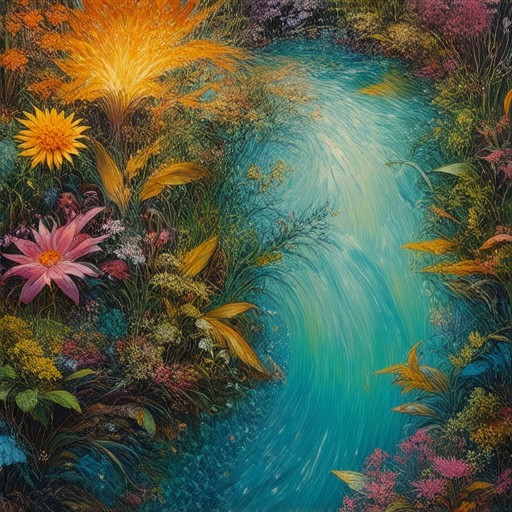
How to Spark Creativity for Your Poetry
Spark your creativity for poetry with these effective strategies to unlock your artistic potential. Whether you’re a seasoned poet or just beginning, these tips will help you find inspiration and foster a productive writing routine.
1. Set Clear Intentions
Start by defining what you want to express through your poetry. Whether it’s emotions, experiences, or abstract concepts, having a clear purpose can guide your creativity. Ask yourself:
- What theme or emotion do I want to explore?
- What narrative or imagery am I drawn to?
- How can I make this unique and meaningful?
2. Explore Different Poetry Forms
Breaking free from traditional structures can reignite your creativity. Try experimental forms like:
- Haiku – Short, concise poems rooted in nature
- Shakespearean Sonnet – A classic 14-line structure
- Free Verse – Unconstrained by rhyme or meter
3. Engage with Multiple Senses
Use your senses to spark vivid imagery. Close your eyes and imagine a scene, then describe it in detail. Listen to music or watch a video while writing to evoke emotional responses. Smell flowers or taste food to trigger memories.
4. Embrace Inspiration from Unexpected Sources
Creativity thrives on diversity. Look for inspiration in unexpected places:
- Visit museums, galleries, or nature reserves
- Listen to diverse genres of music
- Read books or watch films from different cultures
- Observe everyday objects with fresh perspective
5. Practice Regular Writing Exercises
Writing daily exercises can keep your creativity sharp. Try:
- Morning Pages – Write freely for 15 minutes
- Write a poem in reverse
- Describe a dream you’ve had
6. Join a Poetry Community
Surround yourself with fellow creatives to inspire and motivate each other. Visit platforms like Silken Drum to connect with like-minded writers.
7. Reflect on Personal Experiences
Your unique life experiences are your most authentic raw material. Reflect on moments that moved you deeply and translate those feelings into words.
8. Experiment with Language Play
Play with language by manipulating sounds, rhythms, and metaphors. Try alliteration, onomatopoeia, or palindrome structures to create interesting effects.
9. Stay Curious and Open-Minded
Approach poetry as an exploration rather than a destination. Keep asking questions, challenging assumptions, and pushing boundaries to discover new dimensions of your craft.
10. Review and Refine
After writing, take a step back to edit and refine. Remove clichés, tighten imagery, and ensure your message resonates clearly. Share your work with trusted peers for feedback.
By embracing these strategies, you’ll unlock new avenues for creativity and elevate your poetry to greater heights. Remember, the journey of writing is as important as the destination itself.
How Can I Come Up With Creative Thoughts for My Poetry?
Coming up with creative thoughts for poetry requires a blend of inspiration, practice, and a willingness to experiment. Here are some strategies to spark your creativity and unlock fresh ideas:
- Embrace the Power of Imagination
- Allow yourself to think outside the box. Don’t worry about whether an idea is “good” or “bad” at first—just let your mind wander.
- Think about things you’ve never considered before. What if you looked at common objects or experiences through a completely new lens?
- Ask questions. Why does something happen? How can it be different? This curiosity can lead to unique perspectives.
- Explore Different Perspectives
- Consider the opposite. If something is usually seen one way, how would it look reversed or inverted?
- Imagine yourself in someone else’s shoes. How would they perceive a situation differently?
- Look for symmetry, patterns, or hidden meanings in everyday things. These can inspire unexpected metaphors or themes.
- Use the Five Senses to Spark Creativity
- Close your eyes and visualize a scene. Describe it in detail as if you’re painting it with words.
- Listen to sounds around you. Let them evoke emotions or images that you can translate into poetry.
- Smell, taste, or touch something ordinary and see how it makes you feel. These sensations can trigger vivid descriptions.
- Research and Borrow Ideas
- Read widely—poetry, literature, articles, and even social media posts. Let ideas from different sources mix in your mind.
- Study the works of other poets. Analyze their techniques, themes, and use them as a jumping-off point for your own ideas.
- Look at art, films, or music. These mediums often capture emotions and imagery that can inspire poetic expressions.
- Set a Daily Practice
- Devote a few minutes each day to write down whatever comes to mind, without judgment. This habit can train your brain to think creatively.
- Keep a journal or notebook specifically for poetry ideas. Over time, you’ll notice patterns and develop a unique style.
- Experiment with different forms of poetry. Try haiku, acrostics, free verse, or sonnets to expand your range.
- Collaborate and Share
- Discuss your ideas with friends or writing groups. Their feedback can offer new perspectives and spark creativity.
- Share your work online or in workshops. Engaging with others can expose you to diverse influences and inspire fresh thinking.
- Join writing communities. Platforms like Silken Drum can connect you with fellow creators who share your passion for poetry.
- Stay Curious and Keep Learning
- Take workshops or courses on poetry. They can teach you new techniques and reignite your creativity.
- Read books on creativity and poetry. Authors often share valuable insights into the creative process.
- Explore creative challenges. Many online platforms offer prompts or themes that can push your boundaries.
Remember, creativity is a muscle that grows with exercise. The more you practice, the easier it becomes to find fresh ideas for your poetry. Embrace the journey, and let your unique voice shine through your work!
Silken Drum offers writing workshops and resources to help you develop your poetry skills. Explore our inspiration board for more creative ideas and exercises.

Overcoming Creative Slumps in Poetry
Silken Drum understands the challenges faced by poets when dealing with creative slumps. To help you overcome these obstacles, we’ve compiled a list of effective strategies:
1. Explore New Forms and Structures
- Experiment with different poetic forms such as haiku, sonnet, or free verse.
- Try constrained writing exercises to push your boundaries.
- Inspire yourself by reading works from diverse genres and cultures.
2. Set Realistic and Manageable Goals
- Set small, achievable writing targets rather than overwhelming ones.
- Commit to writing a fixed number of poems per week or month.
- Break larger projects into smaller, manageable tasks.
3. Journal Your Ideas Frequentally
- Keep a poetry journal to document thoughts, inspirations, and ideas.
- Review your journal periodically to identify patterns and breakthroughs.
- Use it as a tool to overcome writer’s block and refresh your creativity.
4. Collaborate with Other Writers
- Join writing groups or workshops to gain feedback and motivation.
- Engage in collaborative projects to spark new perspectives.
- Learn from others’ approaches and techniques.
5. Embrace Imperfection and Experiment
- Allow yourself to write poorly or experiment without judgment.
- Use writing prompts to jumpstart your creativity.
- Embrace failure as part of the creative process.
6. Seek Inspiration from Nature and Life
- Find beauty in everyday moments and objects.
- Connect with your surroundings through descriptive language.
- Use sensory details to bring your poetry to life.
7. Practice Regularly and Consistently
- Establish a daily writing routine to maintain momentum.
- Write even when you don’t feel inspired to keep the creative muscles active.
- Review and revise your work to see progress and improvement.
8. Engage with Literary Communities
- Join online poetry communities like Silken Drum to connect with fellow writers.
- Participate in poetry readings and open mic events.
- Learn from established poets and their unique styles.
9. Revisit and Revise Old Work
- Look back at previous poems to find new angles and improvements.
- Study how your style has evolved over time.
- Use older pieces as a foundation for new ideas.
By implementing these strategies, you can overcome creative slumps and continue to produce meaningful and impactful poetry. Remember, every great poem starts with a thought, and practice makes perfect. Keep writing and let your words flow naturally.
Explore more poetry resources and tips on Silken Drum .

What are some creative ways to spark inspiration for poetry using everyday objects?
Here are some innovative approaches to inspire poetry using common household items:
- Engage All Five Senses : Use everyday objects to stimulate your senses. For example, place an unfamiliar object under your nose to evoke a scent or touch its texture to feel its shape. This sensory exploration can unlock vivid imagery in your poetry.
- Explore Object Histories : Research the background of an object. How was it made? What purposes has it served? This historical perspective can add depth and meaning to your poems, making them more relatable to readers.
- Set a Timer for Limited Sessions : Allocate 10 minutes to create a poem using just one object. The constraint forces creativity and helps in focusing on the object’s unique qualities.
- Repurpose Objects : Transform ordinary items into something extraordinary. For instance, turn a spoon into a painting tool or use a shoebox as a portable art studio. This exercise encourages innovation and unexpected uses of everyday objects.
- Write a Descriptive Walkthrough : Describe an object in detail as if guiding someone through it. This methodical approach helps uncover hidden features and sparks curiosity.
- Create a Mini-Saga : Assign a narrative role to an object. Imagine it as a character in a short story, giving it a backstory or mission. This storytelling technique can inspire emotional and symbolic themes in your poetry.
- Document Observations : Keep a journal dedicated to recording daily observations of objects. Over time, this habit reveals patterns and connections that can inspire recurring themes or characters in your work.
- Engage with Nature : Collect found objects from nature, like leaves or stones, and use them as prompts for imagery or metaphors. These natural elements often carry intrinsic beauty and stories waiting to be told.
- Collaborate with Others : Share objects with friends or fellow writers and exchange ideas. Their perspectives can offer fresh viewpoints and inspire new directions for your poetry.
- Use Found Poetry Techniques : Arrange words or phrases from an object’s description into a poem. This method transforms mundane objects into meaningful verse.
By embracing these techniques, you can unlock endless possibilities for crafting compelling poetry using the most ordinary of objects. Remember, the key is to observe, wonder, and let your imagination guide you to new creative heights.
For more resources and community support, visit Silken Drum .
Channel Nature’s Energy
To channel the beauty of nature into vivid imagery for your poetry, begin by observing the world around you with fresh eyes. Notice the details of leaves, petals, waves, or clouds and imagine how they might symbolize something deeper. Consider the elements—light, shadow, wind, water—and think about how they can evoke emotions or convey a mood. For instance, a sunlit forest might remind you of growth and renewal, while a stormy sea could symbolize turbulence or mystery.
- Tips for Capturing Nature: Pay attention to seasons, which bring unique sights and feelings. Use sensory details—how something smells, sounds, or feels—to paint a clearer picture. Look for patterns in nature, like fractals in trees or the symmetry of a flower, and see how they can translate into metaphors.
- Examples of Nature Imagery: Describe a meadow as a canvas of colors, or a mountain as a silent observer. Use similes and metaphors to connect natural elements to human experiences. For example, “The trees whispered secrets under the moonlight,” or “Her laughter echoed like a brook in a quiet valley.”
- Resources for Inspiration: Explore Silken Drum’s nature-inspired poetry guides for techniques and exercises tailored for capturing the essence of nature in your work.
Express Unspoken Emotions
Unspoken emotions often lie just below the surface of everyday moments. To capture these feelings in verse, consider the subtle cues people give—like a furrowed brow, a hesitation, or a lingering glance. These moments can serve as catalysts for exploring deeper emotional landscapes. Think about how a silence between two people might feel heavy with unspoken words or how a gesture might carry the weight of years.
- Techniques for Emotional Expression: Use free writing to explore the emotions attached to a memory or scene. Experiment with personification, giving inanimate objects or natural elements emotional qualities. For example, “The clock ticks heavily, burdened by the weight of waiting,” or “The wind whispers secrets it’s been carrying for years.”
- Exploring Subtle Cues: Observe body language and environment to uncover underlying emotions. A cluttered room might suggest anxiety, while a serene setting could indicate peace. These visual cues can guide your portrayal of unspoken feelings.
- Guides for Emotional Depth: Discover Silken Drum’s resources on deepening emotional resonance in poetry through evocative imagery and metaphorical language.
Reimagine Everyday Objects
Ordinary items can become extraordinary metaphors when viewed through a poetic lens. Take something common, like a chair, and imagine it as a vessel of stories or a guardian of memories. Or transform a broken umbrella into a symbol of resilience. The key is to look beyond the object’s function and tap into its potential as a narrative element or emotional catalyst.
- Methods for Object Reimagining: Assign personalities or backstories to objects. For instance, a chipped teacup might remind you of a grandmother’s kindness, or a rusty lock could symbolize lost connections. Use these objects as springboards for exploring themes like time, loss, or transformation.
- Creating Metaphors: Think creatively about how everyday objects can mirror human experiences. A paper boat might float as a symbol of hope, while a shattered mirror could reflect the fragments of a broken heart.
- Inspiration Sources: Explore Silken Drum’s articles on turning the mundane into the extraordinary through poetic imagery and metaphor.
Dig Into Your Past
Your childhood memories and past experiences are rich sources of inspiration. They often hold universal truths or emotions that resonate with readers. To harness this, revisit meaningful moments and extract lessons or feelings that can be shared. Whether it’s a childhood friend who influenced you deeply or a challenge you overcame, these experiences can serve as fertile ground for poetry.
- Uncovering Past Influences: Reflect on how your upbringing shaped your values or beliefs. Identify key moments that left a lasting impact and consider how they might inform your poetry. For example, a family trip to the beach could remind you of freedom and discovery.
- Transforming Memories: Use memory as a tool to explore recurring themes or emotions. A difficult experience might become a metaphor for broader struggles, while a happy memory could celebrate joy or resilience.
- Resources for Nostalgia: Discover Silken Drum’s guides on using personal history to create emotionally resonant poetry.
Explore Time’s Passage
The flow of time influences every aspect of life, and its passage can be a powerful theme in poetry. Consider how time shapes relationships, transforms environments, or impacts individual growth. Think about the progression of a season from bloom to decay, or how a friendship evolves over years. Time can also symbolize change, loss, or eternity, offering rich material for reflection and storytelling.
- Themes of Time: Explore themes like aging, legacy, or the cyclical nature of time. Use imagery that reflects the passage of time, such as fading light, wilting flowers, or accumulating memories.
- Storytelling with Time: Create narratives that trace the evolution of characters or settings. For example, a poem about a river might track its changes over decades, reflecting the ebb and flow of life.
- Time-Related Resources: Visit Silken Drum’s articles for insights on incorporating time into poetry through metaphor and narrative.
Play with Abstract Concepts
Abstract concepts like love, existence, or infinity can be challenging yet rewarding subjects for poetry. To engage with these ideas, start by defining them in a personal way. For instance, love might be a garden where you tend emotions, while existence could be a journey through the unknown. Use symbols, metaphors, and imagery to make these concepts tangible and relatable.
- Approaching Abstract Topics: Break down complex ideas into digestible parts. For example, existence might be explored through the act of breathing or the wonder of the universe. Love could be portrayed as a bond that strengthens over time or a force that heals wounds.
- Metaphorical Explorations: Choose symbols that resonate with the concept. For existence, stars or the ocean might serve as metaphors for vastness and mystery. For love, a tree or a bridge could symbolize connection and growth.
- Abstract Concept Guides: Find Silken Drum’s resources on crafting poetry around abstract ideas through evocative language and metaphor.
Use Shadows and Light
Shadows and light are powerful symbolic elements in poetry. They can represent contrasts between darkness and illumination, hiding and revealing, or mystery and clarity. Use them to create atmosphere or to highlight character development. For example, a shadow might symbolize fear or regret, while light could signify hope or guidance. Play with how these elements interact to tell a story or convey a feeling.
- Symbolic Uses of Shadow and Light: Explore how shadows can symbolize confinement or uncertainty, while light might represent guidance or truth. Use these elements to create dramatic contrasts or to illustrate character transformations.
- Creative Applications: Imagine a scene where light fades, leaving only shadows, to evoke a sense of isolation or danger. Or use light as a beacon of hope in a otherwise bleak landscape.
- Shadow and Light Resources: Discover Silken Drum’s articles on using shadows and light in poetry to enhance symbolism and atmosphere.
Seasonal Shifts
Seasonal changes offer a natural rhythm of life that can inspire poetry. Each season brings its own set of imagery, emotions, and experiences. For example, spring might remind you of renewal and hope, while autumn could symbolize letting go or gratitude. Use these shifts to explore themes of change, cycles, or the passage of time. Capture the sensory details of each season—sounds, sights, smells—and weave them into your poetry to create vivid scenes.
- Seasonal Themes: Explore how each season reflects different aspects of life. Spring might be associated with growth and rebirth, summer with abundance and warmth, autumn with harvest and reflection, and winter with stillness and preparation.
- Sensory Details: Incorporate the sights, sounds, and scents of each season. For instance, the crunch of leaves in autumn or the freshness of blooming flowers in spring can add depth to your descriptions.
- Seasonal Inspiration: Find Silken Drum’s guides on using seasonal changes as a source of poetic inspiration and thematic exploration.
Opposites and Contradictions
Exploring opposites and contradictions can add complexity and depth to your poetry. Consider how two opposing forces might interact or how a contradiction can highlight a theme. For example, the idea of love versus hate, light versus dark, or freedom versus constraint. Use these pairings to create tension, drive a narrative, or reveal underlying truths. The interplay between opposites can also serve as a metaphor for larger societal or personal conflicts.
- Contrasting Elements: Pair concepts like love and loss, peace and war, or harmony and chaos. These contrasts can create dynamic imagery or narratives that resonate on multiple levels.
- Narrative Potential: Use contradictions to drive a story forward. For example, a poem about a character caught between two opposing worlds or a situation where opposite forces balance each other out.
- Opposite Exploration Resources: Discover Silken Drum’s articles on leveraging opposites and contradictions in poetry for thematic richness and complexity.
Embrace Constraints
Imposing creative constraints on yourself can push your poetry to new heights. Constraints might involve limiting your use of certain words, sticking to a specific structure, or focusing on a particular theme. For example, writing a poem with only three lines per stanza or using only monochromatic colors. These constraints can force you to think creatively and find innovative solutions, leading to unexpected and impactful poetry.
- Types of Constraints: Try constraints like a fixed rhyme scheme, limited vocabulary, or a specific imagery palette. For example, writing a sonnet with a strict iambic pentameter or using only natural imagery.
- Breaking Limits: Use constraints as a way to break free from traditional patterns. For instance, a poem that defies conventional structures or pushes boundaries in theme and form.
- Constraint Resources: Explore Silken Drum’s resources on embracing constraints as a tool for innovation and growth in poetry.
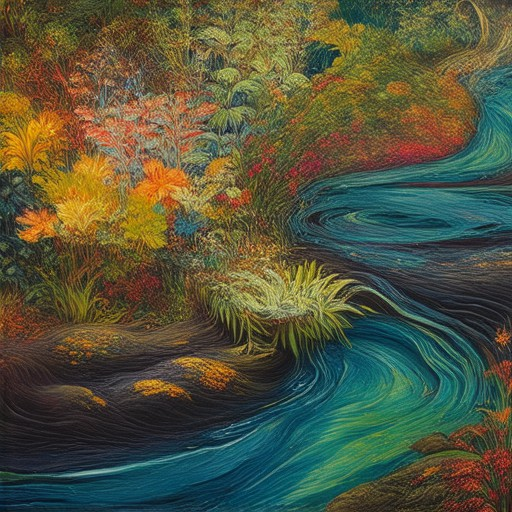
Channel Nature’s Energy
To channel the beauty of nature into vivid imagery for your poetry, consider the following approaches:
- Observe and Capture Details: Pay close attention to the unique features of nature, such as the texture of leaves, the color of sunsets, or the sound of rustling trees. These details can serve as rich sources of imagery.
- Engage All Five Senses: Use your senses to experience nature deeply. Smell the earth after rain, hear the chirping of birds, taste the freshness of a breeze, see the vibrant colors of flowers, and feel the warmth of the sun. This multisensory engagement can create more vivid and memorable imagery in your poetry.
- Personify Elements: Give non-living things in nature personalities or emotions. Imagine mountains whispering secrets or rivers carrying stories. This personification can bring life and depth to your descriptions.
- Consider Seasonal Changes: Explore how nature transforms throughout the year. The arrival of spring, the intensity of summer, the melancholy of autumn, and the quietness of winter each offer unique visual and emotional cues for your poetry.
- Use Contrasts and Shadows: Highlight the interplay between light and dark, such as the shadow of a tree against a bright sky or the contrast between a white flower and a dark leaf. These contrasts can create dramatic and striking imagery.
For more tips on incorporating nature into your poetry, explore our guides on Nature Inspiration and Poetry Techniques .
Express Unspoken Emotions
Everyday moments often hold deeper emotions that are waiting to be expressed in verse. Here’s how you can uncover and capture these feelings:
- Reflect on Moments of Connection: Think about times when you felt a strong emotional bond with someone or something. These moments can be powerful catalysts for poetry that resonates deeply with readers.
- Explore the Subconscious Mind: Sometimes, the emotions we don’t immediately recognize can surface in our imaginations. Write about these feelings indirectly through metaphors or symbols to give them shape and meaning.
- Tap into Universal Experiences: Many people share similar emotions, such as longing, joy, or loss. Writing about these universal feelings can create a sense of connection and relatability in your poetry.
- Use Symbolism to Express Complex Feelings: Certain objects or natural elements can symbolize emotions that are difficult to articulate directly. For example, a broken vase might represent heartache, while a blooming flower could symbolize hope.
Discover more ways to express emotions in poetry by visiting our Emotional Expression guide.
Reimagine Everyday Objects
Ordinary items can become extraordinary metaphors in your poetry. Here’s how to breathe new life into familiar objects:
- Look for Hidden Stories: Every object has a history and a role in your life. Imagine a chipped teacup as a vessel for memories or a worn-out shoe as a symbol of travel and adventure.
- Assign Multiple Meanings: An object can represent different concepts simultaneously. For instance, a mirror might reflect both your appearance and the world around you, serving as a metaphor for self-reflection and reality.
- Play with Shape and Form: Use the physical characteristics of an object to inspire imagery. A spinning top might remind you of childhood, while a shattered glass could symbolize brokenness or fragility.
- Combine Objects Thoughtfully: Group unrelated objects to create unexpected metaphors. For example, placing a clock and a feather together might evoke the passage of time and lightness or weight.
Explore creative object reimagining techniques in our Object Symbolism article.
Dig Into Your Past
Your childhood memories and past experiences can offer rich material for your poetry. Here’s how to mine them effectively:
- Recapture Sensory Memories: Close your eyes and recall the sights, sounds, smells, and tastes of your youth. These sensory details can bring your past experiences vividly to life in your poetry.
- Reflect on Emotional Journeys: Consider the emotions you felt during significant life events. Whether it’s the excitement of a first day at school or the sadness of losing a loved one, these emotions can add depth to your work.
- Transform Trivial Moments: Even minor events from your past can become poetic inspiration. A family trip to the beach or a simple game of hide-and-seek can reveal universal themes and emotions.
- Use Memory as a Metaphor: Sometimes, your past can serve as a metaphor for larger concepts. For example, a childhood friend moving away might symbolize the transient nature of relationships.
Discover how to harness memory in poetry with our Memory in Poetry guide.
Explore Time’s Passage
The flow of time influences every aspect of your poetry, from theme selection to storytelling. Here’s how to leverage time in your work:
- Chronological Narration: Structure your poem around the progression of time, such as a day passing from morning to night or a lifetime spanning decades.
- Seasonal Cycles: Use the changing seasons to symbolize personal growth, change, or the cyclical nature of life. Each season can represent a different stage or emotion.
- Time as a Character: Personify time as a character in your poem, giving it a voice or presence that interacts with other elements of your narrative.
- Contrast Time with Eternity: Pair finite time with the concept of eternity, exploring how fleeting moments coexist with enduring truths or mysteries.
Learn more about time in poetry by reading our Time in Poetry article.
Play with Abstract Concepts
Abstract ideas can serve as rich sources of poetic exploration. Here’s how to engage with them creatively:
- Philosophical Themes: Explore concepts like existence, truth, and justice. These ideas can be poignantly illustrated through metaphors and symbols.
- Mystical Elements: Delve into the unknown or supernatural. Whether it’s ghosts, unicorns, or cosmic phenomena, these subjects can add intrigue and wonder to your poetry.
- Mathematical Patterns: Use mathematical concepts like symmetry or infinity to inspire imagery that challenges traditional perceptions.
- Scientific Phenomena: Draw inspiration from real-world scientific discoveries or theories. For example, the movement of planets or the behavior of light can be poetic metaphors.
Discover how to handle abstract concepts in poetry with our Abstract Concepts guide.
Use Shadows and Light
Shadows and light are powerful symbolic elements in poetry. Here’s how to employ them effectively:
- Symbolic Contrast: Use shadows to represent darkness, mystery, or the unknown, while light symbolizes clarity, hope, or guidance. Together, they create a dynamic contrast that enhances your imagery.
- Creative Visualization: Imagine how light interacts with objects and environments. For example, sunlight filtering through leaves creates dappled patterns, while moonlight casts long shadows on a wall.
- Metaphorical Extensions: Extend the symbolism of shadows and light to represent broader concepts. A shadowed forest might symbolize fear, while sunlight breaking through clouds could signify breakthroughs or renewal.
- Seasonal Interpretations: Relate shadows and light to seasonal changes. For instance, shadows lengthening with winter solstice or light returning with spring.
Explore shadow and light symbolism in our Shadows and Light article.
Seasonal Shifts
Seasonal changes offer a wealth of inspiration for your poetry. Here’s how to capture their essence:
- Observational Writing: Spend time observing how nature responds to seasonal shifts, such as cherry blossoms in spring or autumn foliage.
- Emotional Reflection: Connect seasonal changes to your personal experiences. For example, the arrival of autumn might remind you of endings or transitions in your life.
- Thematic Exploration: Use seasonal themes to explore broader topics like growth, decay, or the cycle of life. These themes resonate universally and can deepen your poetry’s impact.
- Seasonal Symbolism: Assign symbolic meanings to each season. Spring could represent rebirth, summer abundance, autumn mellowing, and winter hibernation or stillness.
Find seasonal poetry inspiration in our Seasonal Poetry guide.
Opposites and Contradictions
Exploring opposites and contradictions can add complexity and depth to your poetry. Here’s how to approach this:
- Contrasting Elements: Pair seemingly opposite things, such as hot and cold, light and dark, or peace and war. This contrast can highlight the tension and balance in your work.
- Character Duality: Create characters who embody conflicting traits. For example, a hero with a tragic flaw or a villain with a redeeming quality.
- Conceptual Tensions: Explore abstract concepts that oppose each other, such as freedom versus control or love versus hate. These tensions can drive narrative conflicts and thematic exploration.
- Ironic Situations: Use irony to create humorous or poignant moments. For instance, a rainy day at a picnic or a snowman melting in the sun.
Discover how to use opposites and contradictions in poetry with our Opposites and Contradictions article.
Embrace Constraints
Imposing creative constraints on yourself can push your poetry to new heights. Here’s how to approach this:
- Limit Your Palette: Choose a specific set of words, colors, or themes to constrain your poetry. For example, using only red and blue or focusing on a particular historical era.
- Set Structural Limits: Experiment with fixed forms like sonnets or haiku. These constraints can force you to think creatively within boundaries.
- Enforce Imagery Rules: Decide on a particular type of imagery, such as only using natural elements or focusing on human figures. This limits your options and encourages innovation.
- Adopt a Theme: Choose a central theme or idea and weave it throughout your poem. This constraint ensures your work remains cohesive and focused.
Explore creative constraints in poetry with our Creative Constraints guide.
Conclusion
By channeling nature’s energy, expressing unspoken emotions, reimagining everyday objects, digging into your past, exploring time’s passage, playing with abstract concepts, using shadows and light, embracing seasonal shifts, and confronting opposites, you unlock new dimensions of poetic expression. Embrace these techniques and let your imagination guide you to create poetry that resonates deeply with readers and reflects the beauty and complexity of the world around you.

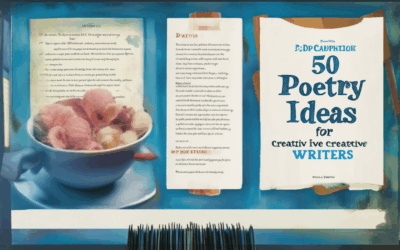
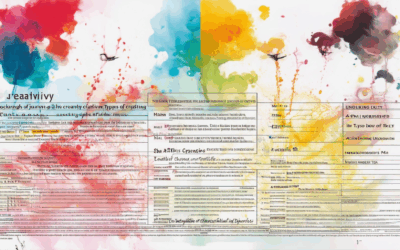
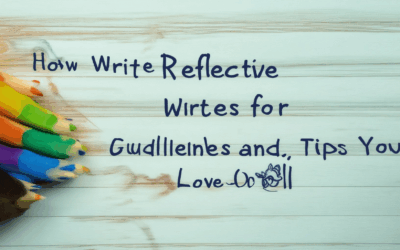
0 Comments